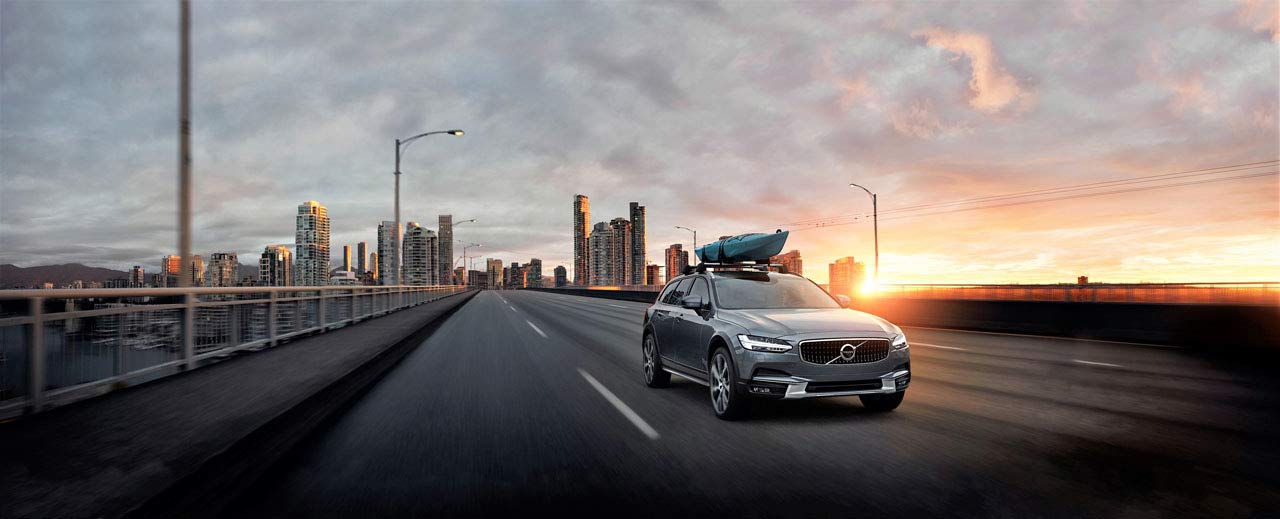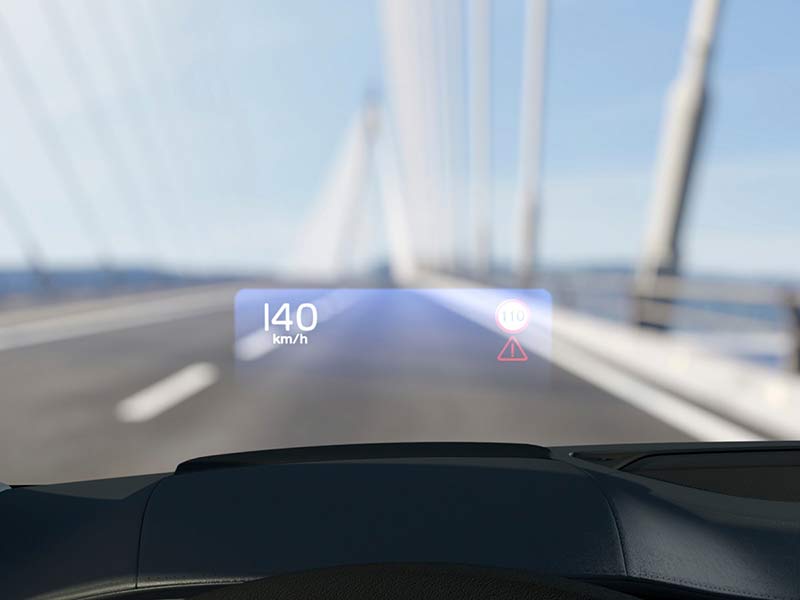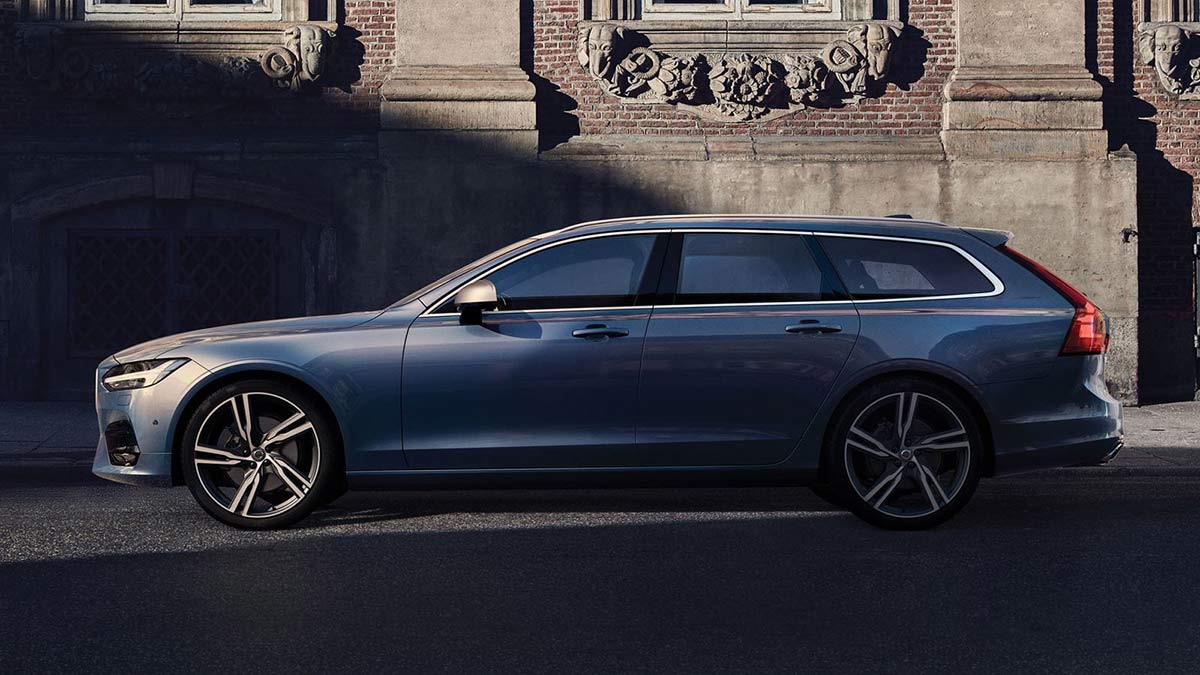High Standards
IntelliSafe is what we call the standard safety equipment in all new Volvo cars. This high level of standard safety on all new Volvo cars is a vital element in helping us to achieve our safety vision of reducing exposure to safety conflicts on all vehicles. Learn more about some of the key features and how they contribute towards our Vision 2020 - that no one should be killed or seriously injured in a new Volvo car from 2020.
City Safety
City Safety helps to protect people inside and outside the car by spotting potential danger and helping you avoid it. Volvo Cars was the first to introduce this type of safety system as standard in every new Volvo car. City Safety uses radar and camera technology to identify other vehicles, cyclists, pedestrians and large animals, such a moose, elk or horses, day or night. It warns you if it detects an imminent collision and, if you don’t react in time, it can automatically apply the brakes to help avoid or mitigate a collision.
At speed differences up to 50 km/h between the car and the vehicle in front, a collision can be avoided if the driver does not react. At higher speed differences, the collision can be mitigated. In some of our cars City Safety also includes Steering Support, which helps you to steer away from danger as effectively and safely as possible.
Active and connected safety systems
Our approach to safety is unique. We have been studying car crashes in great detail since the 1970s and have developed a range of features that help to mitigate crashes, improve driver alertness, communicate speed limits and even communicate directly to other cars when there is a danger on the road ahead with our Slippery Road and Hazard Light Alert features.
We understand the most common cause of collisions and single vehicle crashes and have developed features to help mitigate a wide range of potential scenarios that could result in a collision or a car leaving the road unintentionally.
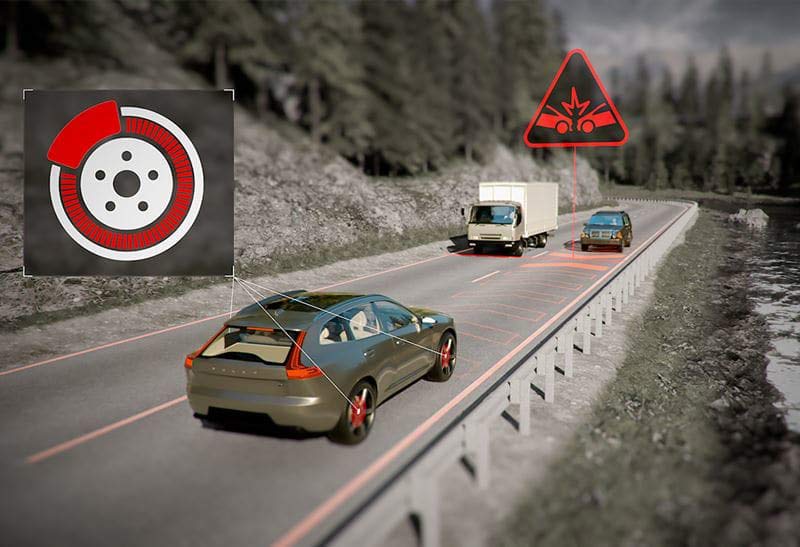
Active and connected safety systems
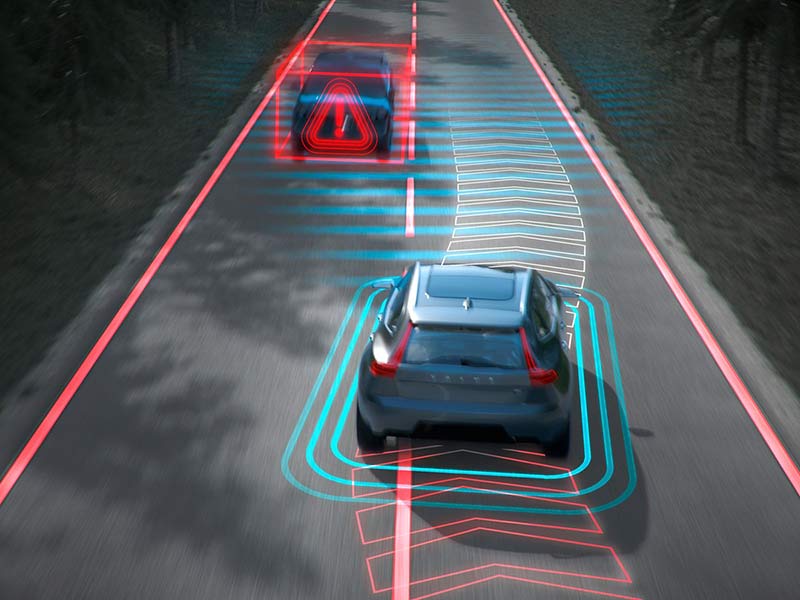
STEERING YOU OUT OF HARM’S WAY
ONCOMING LANE MITIGATION
This system helps the driver avoid collisions with oncoming vehicles by assisting them to steer back into their own lane.
If the car drifts over a lane marking, heading into the path of an oncoming vehicle and the driver takes no action, this system automatically steers the car back into its own lane.
A message is shown in the driver display after the steering intervention has been completed. The driver can override the automatic steering at anytime.
The system is active at speeds between 60 and 140 km/h, requires a visible lane marking and detects oncoming four-wheeled vehicles.
RUN-OFF ROAD MITIGATION
The Run-off Road Mitigation function is designed to help prevent unintentional road departures at vehicle speeds between 65-140 km/h.
Run-off road accidents are amongst the most common type of single-vehicle accidents. Reasons for such accidents include driver inattentiveness, fatigue or poor weather conditions.
When a potential run off road situation arises torque can be applied to the steering to support the driver along with braking action. The system can always be overridden by the active intervention of the driver.
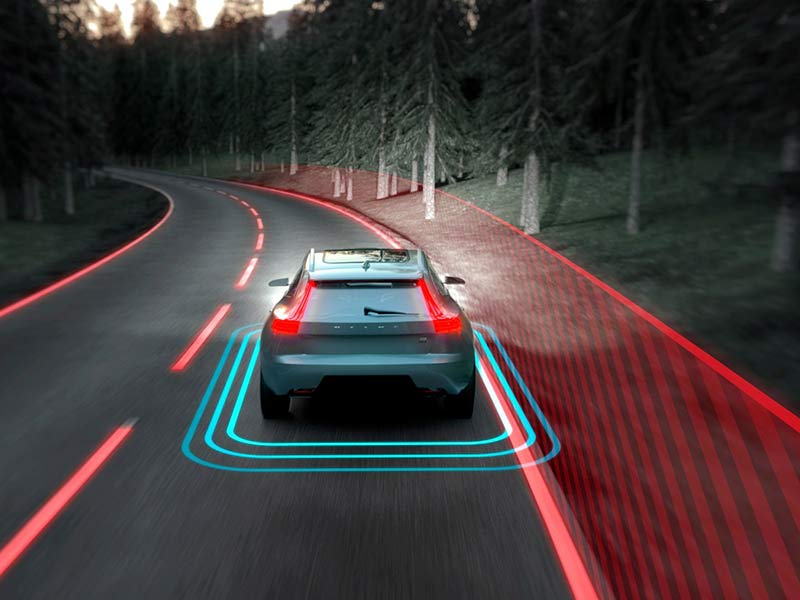
Run-Off Road Mitigation
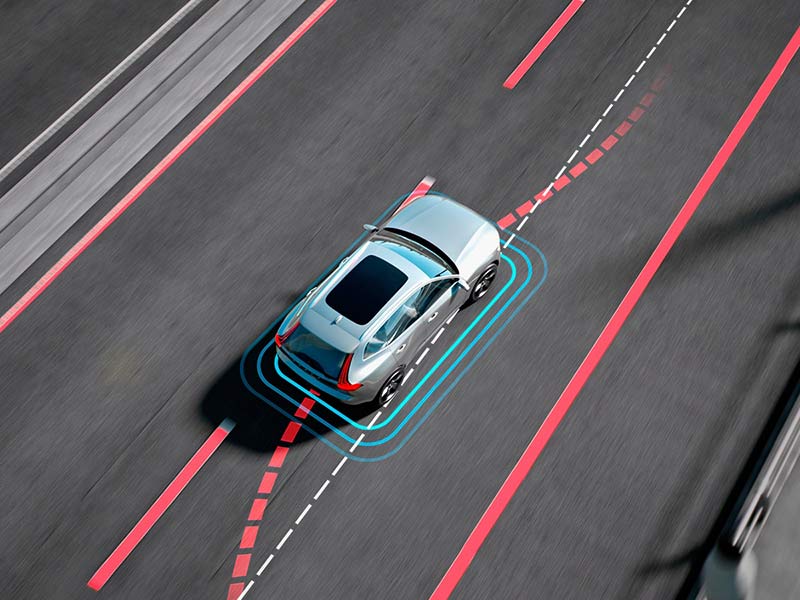
KEEPING YOU ON THE RIGHT SIDE OF THE LINE
Lane Keeping Aid
Lane Keeping Aid is a standard-fitted system that helps the driver to keep the car in its lane by gently steering the car back if it is about to cross a lane marking if the car senses that the driver is not driving actively, or for example, using their indicators.
If the supplied steering intervention is insufficient the driver is alerted by vibrations in the steering wheel.
The system uses the windscreen-mounted camera and relies on visible lane markings. This system can be switched off in the car settings and feedback can be set to vibration of the steering wheel only, vibration and intervention or just intervention.
The system is active between 65-200 km/h.
Driver Alert Control
Distraction, lack of concentration, and falling asleep are major reasons for accidents.
In 2007 Volvo Cars introduced a world-first technology to combat this danger. Driver Alert Control keeps track of the car’s path in relation to lane markings on either side, by means of the camera in the windscreen.
If the system detects that the car is being driven in an erratic manner the driver gets an alert in the form of an audible signal as well as a text message and a coffee cup symbol in the driver display, that indicate it is time to take a break.
With Sensus Navigation, the driver also gets guidance to the next available place to take the break.
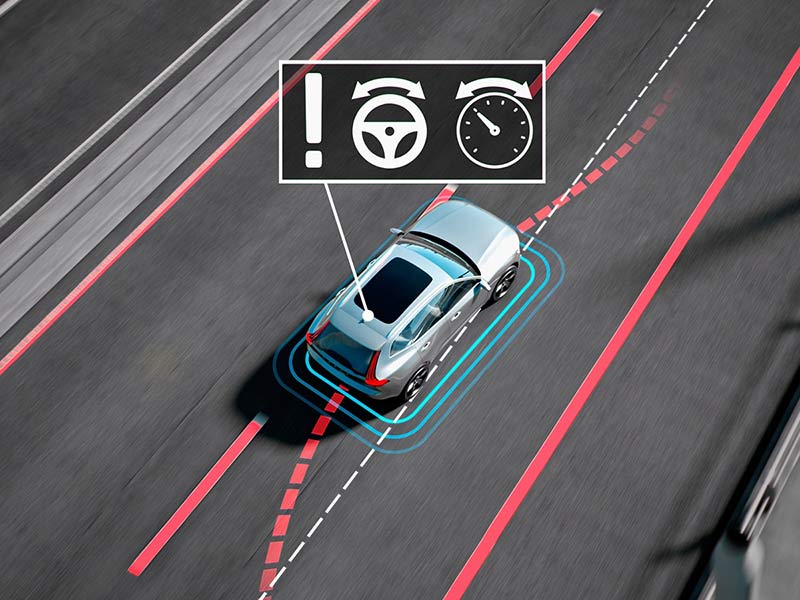
IT’S TIME FOR A BREAK...
Road Sign Information
At Volvo we understand that you have a lot on your mind sometimes. This is why we have developed Road Sign Information and Speed Limiter features to help remind you of the current speed limit.
Road signs the driver is passing are displayed in the lower part of the speedometer, or on the Head-up display, if fitted. The system can display European and US speed limit signs – including variable speed limit signs – and supplemental sign information, as well as some of the more important European prohibition signs.
The driver can activate/deactivate a speeding alert in the menu system, including a desired offset speed to the detected speed limit. If speeding alert is activated and the driver exceeds the limit, plus the chosen offset, a speed limit sign icon will flash in the speedometer. Information about speed cameras is automatically presented when Road Sign Information is activated. If the speeding alert function is activated and the car exceeds the speed limit when approaching a speed camera, a speeding alert warning is issued as described above. No offset speed is considered when approaching speed cameras.
If the car is equipped with Sensus Navigation, speed limit information is fetched from the navigation unit and combined with the speed signs detected by the camera.
The driver can activate a warning sound for the no-entry sign warnings and speeding alert (disengaged by default).
Protective safety systems
The foundation for our approach to safety is to help avoid or mitigate accidents before they can occur. In the event of an unavoidable collision we have the technology to make a real difference.
Safety cage
To help keep the occupant space intact in the event of a crash, our cars are made stronger in every sense. The complete safety cage around the occupants is made from hot-formed high-strength steel and is designed for maximum occupant protection in all types of crash scenarios.

Safety cage
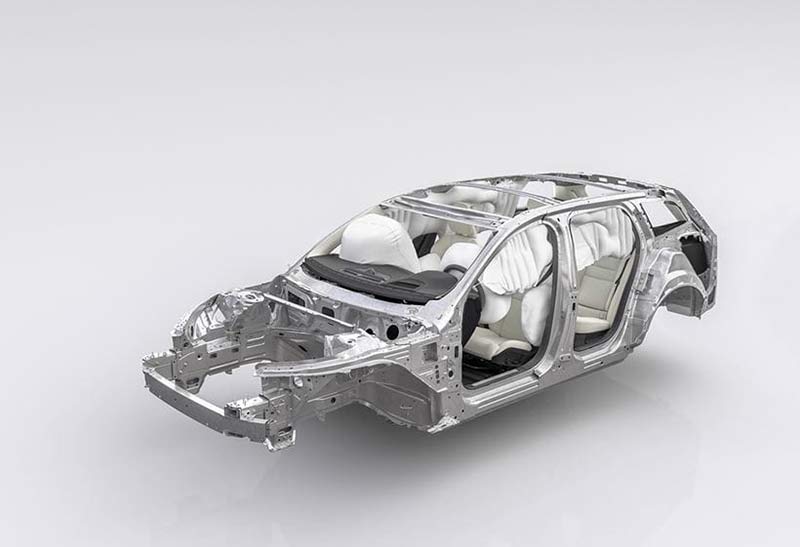
Airbags
Airbags
Volvo cars contain a range of airbags that work in conjunction with the safety belts. They are designed to help protect the occupants in the event of a crash. They include the driver airbag, located in the steering wheel, the front passenger airbag, located in the dashboard, knee airbags, side airbags, introduced by Volvo in 1994, and inflatable
Seats
Our current generation seats are made of different grades of steel, to ensure safety and comfort. The energy-absorbing functionality between the seat and seat frame helps to reduce spine injuries. It deforms mechanically to cushion the vertical forces that can arise when the car encounters a hard landing. This is an intergral part of of our Run-off Road Protection feature.

Seats
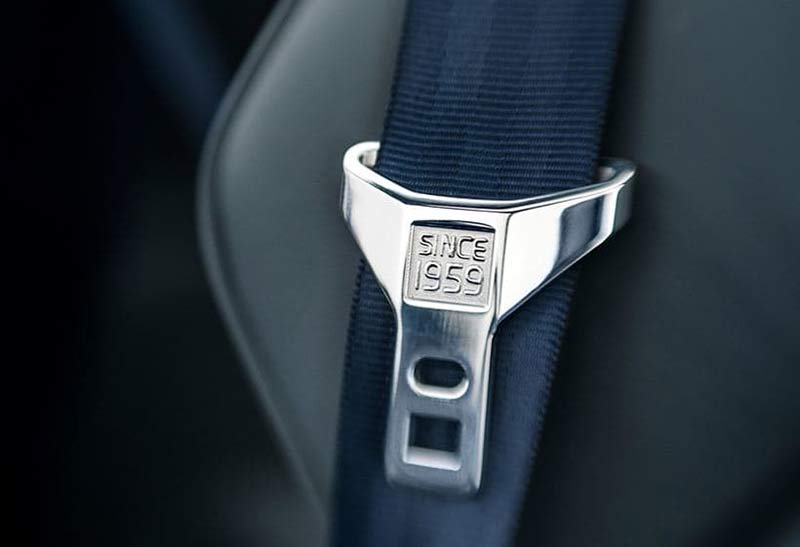
Safety belts
Safety belts
Did you know that the three-point safety belt was first put into production by Volvo Cars? It was designed by Volvo engineer Nils Bohlin in 1959, years before it would become available in most cars. Volvo also pioneered safety belts in the rear seat and a three-point safety belt on the rear seat mid-position. The rear safety belts are vital for the passengers using them, but also for the occupants in front.
The three-point safety belt is one of the most important inventions for mankind and it is the most important protective safety feature in the car.
Run-off Road Protection
This feature uses input from the car’s advanced sensor system to detect a run-off road scenario. When detected, the front safety belts tighten to keep the occupants in position.

Run-off Road Protection
“Cars are driven by people. The guiding principle behind everything we make at Volvo therefore is, and must remain, safety.”
Gustaf Larson, co-founder of Volvo
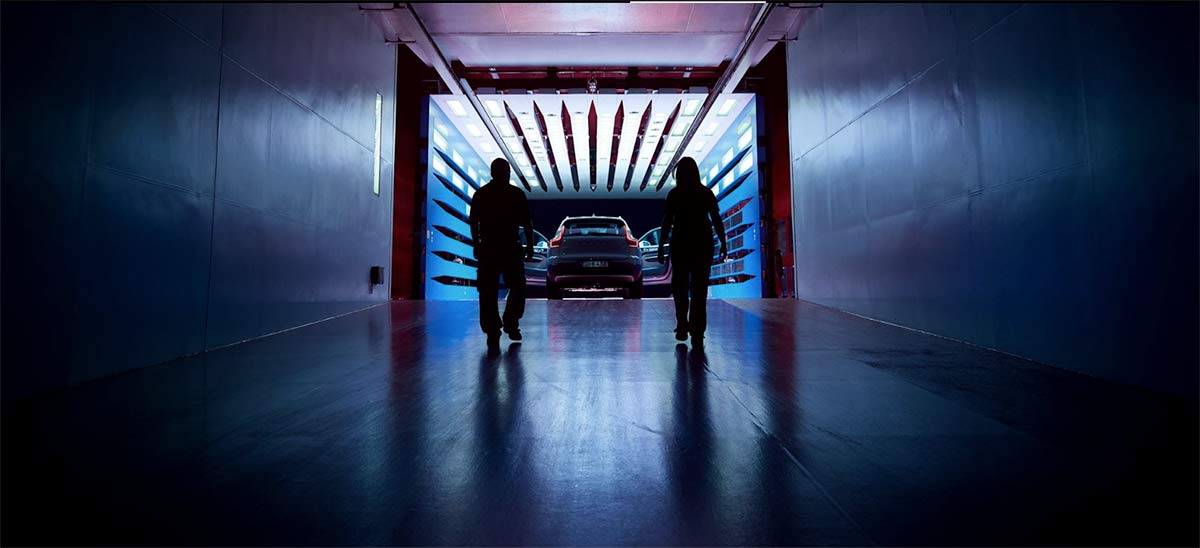
How accidents can make cars safer for everyone
Since the 1950s, we have studied more than 43,000 cars in real-life accidents with 72,000 occupants. As a result, this has contributed to many innovative systems such as WHIPS, SIPS, and numerous child safety products. We have now gathered more than 100 research papers, available for anyone to download. We hope this will lead to safer cars for everyone – regardless of gender and size.
E.V.A. - EQUAL VEHICLES FOR ALL
Frequently Asked Questions
-
For how long has Volvo tested with female crash test dummies?
We have tested with a female crash test dummy since 1995, starting with the only available small sized female frontal impact dummy, HIII 5th percentile. In 2001 we included a small sized side impact dummy, SID2s. As the world-first midsized female crash test dummy, we developed a virtual model of a pregnant woman early 2000s. Ten years later we extended the crash test dummy family with a midsized female crash test dummy for whiplash evaluation in rear end impacts, as the only original car manufacturer in the co-development of EvaRID.
-
How does Volvo Cars develop safe cars based on real world data?
Data on Volvo cars in Sweden has been collected and stored in Volvo Cars Statistical Traffic Accident Database since 1970. The aim is to provide a large body of readily available data on the types of injury that arise in conjunction with specific accidents. The findings can then be applied. The good news is that we gathered data in the same way for many years, which has made it possible to map our progress and improve our success rate over the years.
-
From how many crashes has Volvo Cars collected data?
In a pre-study in 1967, we started out with 28,000 cases. Since 1970, we have included more than 43,000 cars in real-life accidents with 72,000 occupants in our statistical database. In addition, we use data from several databases globally when doing our analysis.
-
What knowledge does the E.V.A. Initiative consist of?
The knowledge you are able to access and download through this project is a collection of more than 100 research papers. It is a collection of some of the research behind the development of safety innovations in Volvo Cars since the 1950s.
-
What is Volvo’s 2020 Safety vision?
That no one should be killed or seriously injured in a new Volvo car.
-
Do I still have to wear a safety belt in a Volvo?
Yes, the safety belt is still the most effective way to save lives and reduce injuries in car crashes. It’s also mandatory in almost all countries in the world. Volvo’s safety belts are also continually being refined to further improve safety for everyone.
The E.V.A. Initiative

How accidents can make cars safer for everyone
We started making cars because we believed no one else made cars safe enough for the Swedish roads. Over the years, we have combined this safety commitment with knowledge from real accidents. This has lead to unique safety innovations – SIPS, WHIPS and IC – that are now standard in all newer Volvo models.
The Joy of Driving
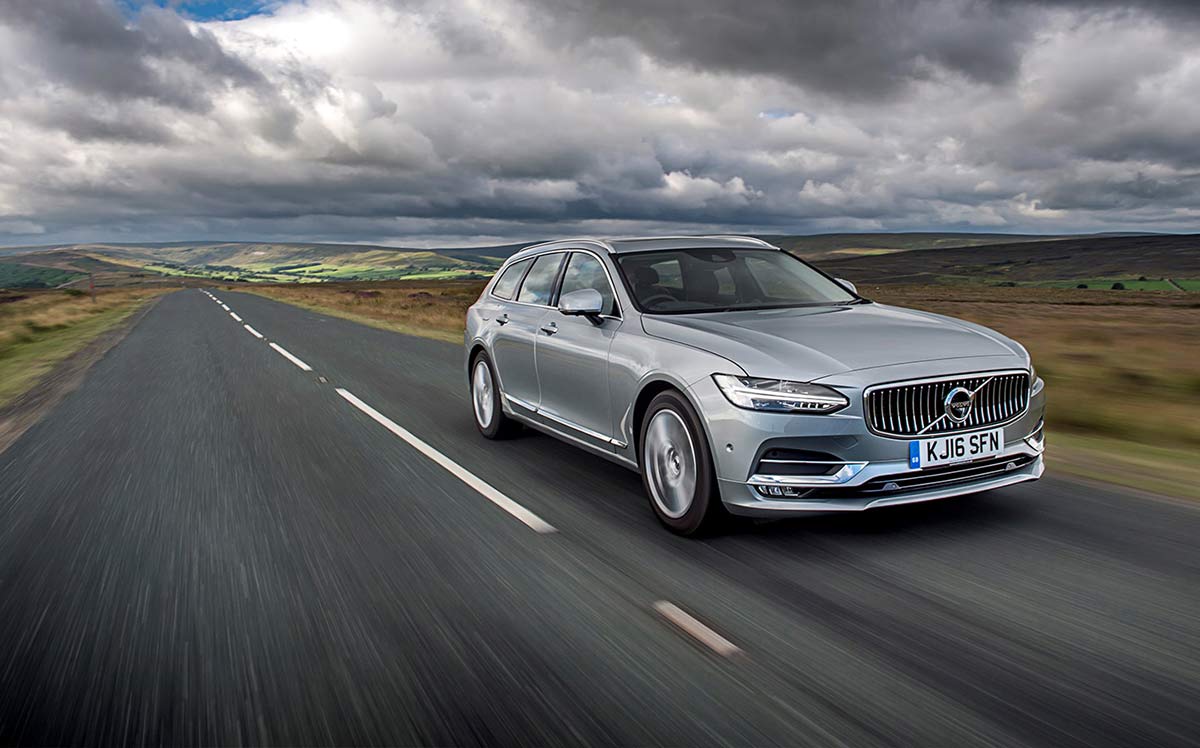
Purity of form combines with functionality that fits your life, wherever your journeys take you.
Built for the way you live.
Volvo Safety
